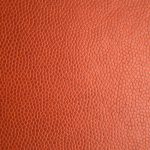First, identify your upholstery fabric type to avoid damage. Use gloves to scoop up solids gently, then blot excess liquid with clean towels without rubbing. Apply a mild cleaner or diluted vinegar solution, gently scrubbing the stain. Rinse by blotting with a damp cloth and dry thoroughly using air circulation. To neutralize odors, sprinkle baking soda and vacuum after hours. For more details on protecting and maintaining your upholstery, keep exploring these techniques.
Table of Contents
Key Takeaways
- Gently scoop up solid vomit using gloves and a dull tool to avoid pushing it deeper into the fabric.
- Blot excess liquid carefully with clean, absorbent cloths without rubbing to prevent spreading stains.
- Apply a mild detergent or vinegar solution, scrub gently, and rinse with a damp cloth to clean the area.
- Use baking soda or a vinegar-water mist to neutralize odors, letting them sit before vacuuming or air drying.
- Dry upholstery thoroughly with towels and air circulation to prevent mold and water stains.
Assessing the Type of Upholstery Fabric
Before you begin cleaning vomit from your upholstery, you need to identify the fabric type. Different fabrics react differently to moisture and cleaning agents, so knowing what you’re dealing with helps you avoid damage.
Identifying your upholstery fabric before cleaning vomit prevents damage and ensures effective stain removal.
Check the manufacturer’s tag for cleaning codes like W, S, WS, or X—these tell you which cleaners are safe. If there’s no tag, test a small hidden area by dabbing water; if it darkens, it’s likely water-sensitive.
Natural fabrics like cotton and linen absorb liquids quickly but can usually handle water-based cleaners. Synthetic fabrics such as polyester resist stains better but may react poorly to harsh chemicals.
Delicate materials like silk or velvet require extra care or professional cleaning. Understanding your upholstery fabric guarantees you choose the right approach and protect your furniture.
Gathering Necessary Cleaning Supplies
Knowing your upholstery fabric helps you pick the right cleaning supplies and avoid damage. Before you start, gather these essentials to tackle vomit effectively and neutralize odors.
| Cleaning Supply | Purpose | Tips |
|---|---|---|
| Mild Detergent | Breaks down stains | Use diluted solutions |
| White Vinegar | Neutralizes odors | Test on hidden fabric area |
| Clean Cloths/Towels | Absorb moisture | Use white to prevent color transfer |
Additionally, have a spray bottle for applying solutions evenly and disposable gloves to protect your hands. Avoid harsh chemicals that might ruin delicate fabrics. Having these supplies ready will streamline the cleaning process and guarantee you treat your upholstery gently and effectively.
Removing Solid Matter Safely
Before you start, put on protective gloves to keep things hygienic.
Gently scoop up the solid matter without rubbing it deeper into the fabric.
Make sure to dispose of the waste properly to avoid any lingering odors or contamination.
Use Protective Gloves
Although it might seem like a small step, putting on protective gloves is essential when removing solid vomit from upholstery.
Gloves protect your skin from bacteria and unpleasant odors, reducing the risk of contamination or infection. They also prevent you from directly touching harsh cleaning agents later on. Choose disposable gloves made of nitrile or latex for flexibility and durability.
Before you start, make sure your gloves fit well to maintain dexterity and avoid tears. Once your gloves are on, you can confidently handle the mess without worrying about germs spreading to your hands or other surfaces.
After finishing, carefully remove the gloves by peeling them inside out to avoid contamination, then discard them properly and wash your hands thoroughly. This simple step keeps the cleanup safe and hygienic.
Scoop Without Rubbing
With your gloves on and hands protected, the next step is to remove the solid vomit without spreading it further.
Grab a dull-edged tool like a spatula or a plastic scraper to gently scoop up the solids. Avoid rubbing or pressing down, as this will push the mess deeper into the fabric fibers and make cleaning harder.
Work slowly and carefully, lifting the vomit off in small sections. If you don’t have a scraper, stiff paper or cardboard folded into a scoop can work in a pinch.
Once you’ve removed as much as possible, set the material aside carefully to prevent dripping.
This method keeps the stain from spreading, making the upholstery easier to clean and reducing odor later on.
Dispose of Waste Properly
After you’ve carefully scooped up the solid vomit, you need to dispose of it properly to prevent contamination and odors.
Start by placing the waste into a sturdy plastic bag to contain any liquid and smell. Seal the bag tightly to avoid leaks.
Then, follow these steps:
- Double-bag the waste for extra security against spills and odors.
- Dispose of the sealed bags in an outdoor trash bin with a secure lid.
- Wash your hands thoroughly with soap and water to eliminate germs.
Blotting the Area to Absorb Excess Liquid
Blotting is your first step to prevent vomit from soaking deeper into the upholstery.
Grab a clean, absorbent cloth or paper towels and gently press down on the affected area. Avoid rubbing, as it can spread the stain and embed it further into the fabric. Instead, apply steady, light pressure to soak up as much liquid as possible.
Change to a dry section of the cloth frequently to maximize absorption. If needed, use multiple cloths or towels until you no longer see moisture transferring. This step minimizes staining and prepares the surface for effective cleaning.
Preparing a Cleaning Solution for Upholstery
Before tackling the stain, you’ll need to prepare an effective cleaning solution tailored for upholstery. This guarantees the vomit is lifted without damaging the fabric.
Start by gathering these ingredients:
- Warm Water – About two cups to dilute your cleaning agents gently.
- Mild Dish Soap – One teaspoon to break down organic matter without harshness.
- White Vinegar – One tablespoon to neutralize odors and disinfect the area naturally.
Mix these in a clean spray bottle or bowl, stirring gently to combine.
Avoid using bleach or strong chemicals as they might discolor or weaken upholstery fibers. Once mixed, test the solution on a hidden spot to verify it won’t cause damage.
This careful preparation sets you up for effective stain removal and odor control.
Applying the Cleaner and Gently Scrubbing
Choose a cleaning solution that’s safe for your upholstery type to avoid damage.
Apply it carefully to the stained area, then gently scrub using a soft brush or cloth.
This approach helps lift the stain without harming the fabric.
Selecting Appropriate Cleaning Solution
Although it might be tempting to reach for strong chemicals, you’ll want to select a cleaning solution that’s gentle enough for your upholstery fabric yet effective against stains and odors.
Start by testing any cleaner on a hidden spot to avoid discoloration. Consider these three options:
- A mix of mild dish soap and warm water—safe for most fabrics and breaks down stains.
- White vinegar diluted with water—neutralizes odors and disinfects gently.
- Enzyme-based cleaners—target organic stains like vomit without harsh effects.
Apply your chosen solution sparingly to avoid oversaturation.
This careful selection helps guarantee your upholstery stays intact while effectively removing stains and odors, making your cleaning process both safe and successful.
Techniques for Gentle Scrubbing
Start by applying your chosen cleaning solution sparingly to the stained area using a soft cloth or sponge. Avoid soaking the fabric, as excess moisture can damage upholstery and prolong drying time.
Next, gently scrub the stain in a circular motion, working from the outside inward to prevent spreading. Use light pressure to avoid damaging delicate fibers. If the stain resists, reapply a small amount of cleaner and continue gently scrubbing.
Remember to frequently rinse your cloth or sponge to lift away loosened debris rather than rubbing it back into the fabric.
Once the stain has lifted, blot the area with a clean, dry cloth to absorb excess moisture. This careful approach guarantees effective cleaning while protecting your upholstery’s integrity.
Rinsing and Drying the Upholstery Properly
Once you’ve removed the vomit and treated the stain, you’ll want to rinse the upholstery thoroughly to eliminate any remaining cleaning solution and residue.
Start by dampening a clean cloth with plain water. Gently blot the area, ensuring you don’t overly saturate the fabric.
Then, follow these steps:
- Use a dry towel to absorb as much moisture as possible by pressing firmly on the wet spot.
- Open windows or turn on a fan to promote air circulation and speed up drying.
- Avoid direct heat sources like hair dryers, which can damage upholstery fibers or cause shrinkage.
Proper rinsing and drying prevent water stains and mold growth, leaving your upholstery clean and fresh.
Using Natural Odor Neutralizers
Three natural odor neutralizers you can use to eliminate lingering vomit smells from upholstery are baking soda, white vinegar, and activated charcoal.
Sprinkle baking soda generously over the affected area and let it sit for several hours or overnight to absorb odors. Afterward, vacuum it up thoroughly.
Generously sprinkle baking soda on stains, let it sit overnight, then vacuum to remove lingering odors.
For white vinegar, mix equal parts vinegar and water in a spray bottle, lightly mist the upholstery, and let it air dry; vinegar neutralizes odors without leaving a strong scent once dry.
Activated charcoal works by trapping odor molecules—place a few charcoal briquettes wrapped in cloth near the upholstery or use activated charcoal bags to absorb smells over time.
These natural solutions are safe, effective, and environmentally friendly for freshening your upholstery after cleaning vomit.
Preventing Future Stains and Odors
After neutralizing odors with natural remedies, you’ll want to take steps to protect your upholstery from future stains and smells.
Start by creating a barrier that repels liquids and prevents absorption. Here’s how:
- Apply a fabric protector spray evenly over your upholstery to shield fibers from spills.
- Use washable slipcovers or throws that you can remove and clean regularly.
- Establish a quick-clean routine by keeping towels and upholstery cleaner nearby for immediate action.
Frequently Asked Questions
Can Vomit Stains Cause Permanent Damage to Upholstery?
Imagine a spilled glass of red wine on your favorite couch—if you don’t act fast, that stain becomes permanent. Similarly, vomit stains can cause lasting damage if you don’t clean them promptly and properly.
Is Professional Cleaning Necessary After a Severe Vomit Stain?
You don’t always need professional cleaning after a severe vomit stain, but if stains or odors persist despite your efforts, hiring experts guarantees deep cleaning, prevents damage, and restores your upholstery effectively.
How Long Does It Take for Upholstery to Dry Completely?
It usually takes your upholstery anywhere from 4 to 12 hours to dry completely, depending on fabric type and ventilation. You can speed this up by using fans or opening windows to increase airflow and reduce moisture.
Are Enzyme Cleaners Safe for All Types of Upholstery Fabric?
Enzyme cleaners aren’t a one-size-fits-all key; some delicate upholstery fabrics like silk or velvet may react poorly. Always test a small, hidden spot first to avoid damage before you immerse yourself in full cleaning.
Can Pet Vomit Require Different Cleaning Methods Than Human Vomit?
Yes, you’ll need different methods since pet vomit often contains more bacteria and distinct odors. Using enzyme cleaners designed for pet stains works best, while human vomit might respond well to general household cleaners and odor neutralizers.
- Recycling Nonwoven Fabrics: Is It Possible? - July 11, 2025
- Recycling Nonwoven Fabrics: Is It Possible? - July 11, 2025
- Recycling Nonwoven Fabrics: Is It Possible? - July 11, 2025







